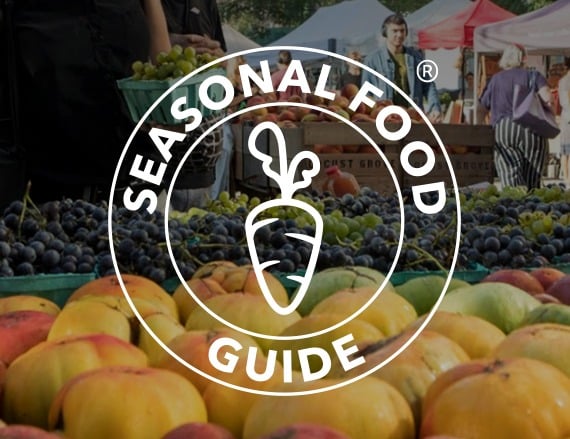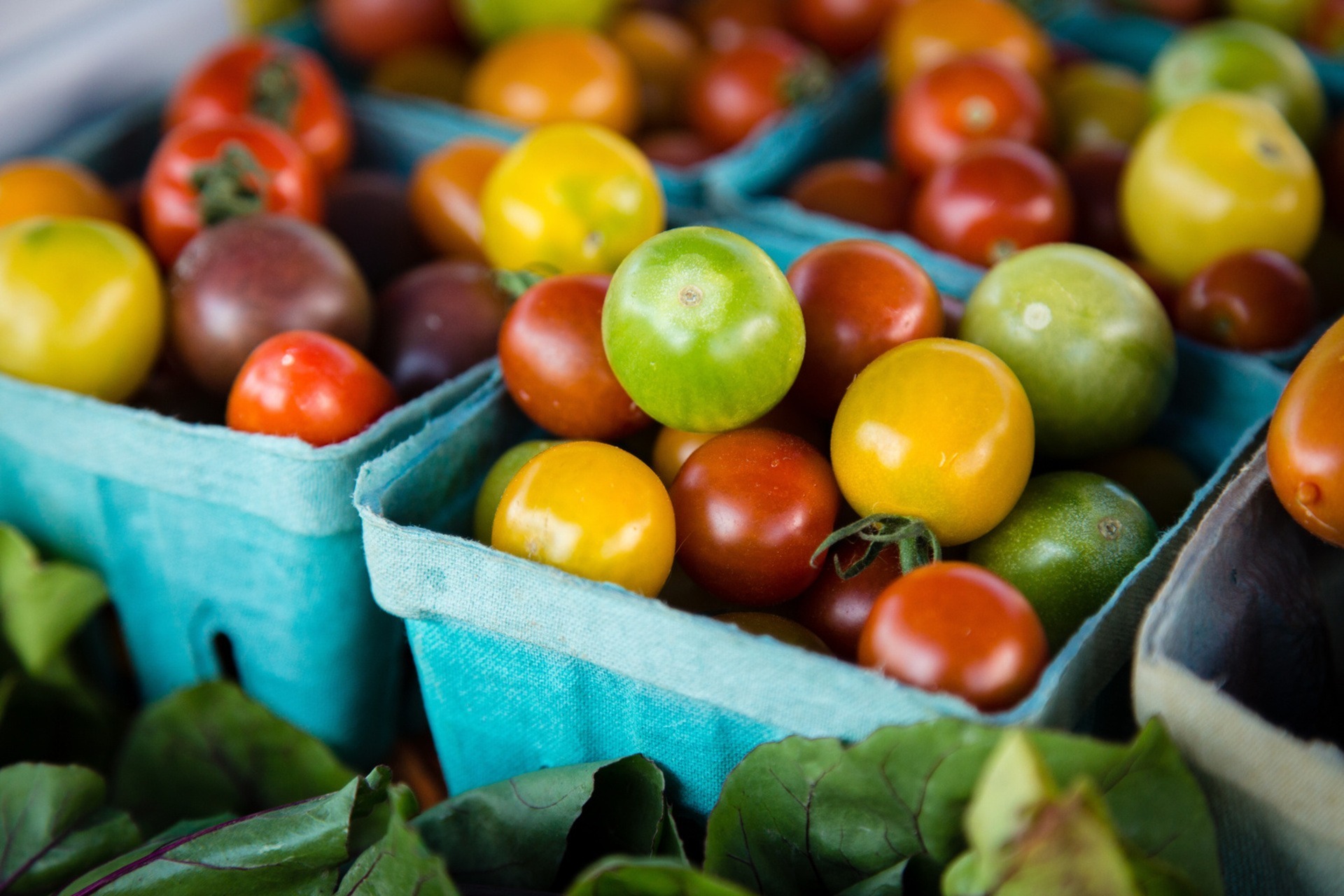How one New Jersey farm grows food year round
Come the weekend after Thanksgiving, New York City farmers’ market devotees resign themselves to five months of a dwindling parade of storage crops that grow increasingly withered and pale as the wintry weeks plod on. It’s all woody turnips and softening potatoes, supplemented with supermarket SSOs (strawberry-shaped objects, in the words of kid-lit author Rebecca Stead), from December on. Unless, that is, you live near a market that hosts a Lani’s Farm booth.
Even in the coldest months, five days a week the Bordentown, New Jersey–based grower sets out what for the frigid Northeast is an astonishing array of produce and value-added goods at greenmarkets in Manhattan, Brooklyn and Queens. Spread on tables beneath a peaked white tent are bagged and bundled salad and cooking greens; beets and winter squashes; herbs and the occasional surprise few boxes of cherry tomatoes; Jerusalem artichokes and dried beans; frozen soups and dumplings; dried pastas made from Lani’s own farm-grown wheat; Lani’s-made soy sauce and gochugaru and gochujang and kimchi — Lani’s owner, Kwang Koo Yoo, aka Steve, grew up in Busan — and eggs, currently holding steady at $8 a dozen.
In my years as a Lani’s customer, I’ve been curious about how the farm produces enough food that all their income, even in winter, comes from direct farmers’ market sales. This is a model usually considered to be economically unsustainable, or at least, fraught with challenges. There’s also ongoing debate about whether local food from small farms has the ecological benefits over industrialized systems that some enthusiasts have proposed. So I was curious, too, about whether the virtue I feel in supporting a farm like Lani’s would hold up under in-person scrutiny.
On a bitterly cold morning in February, with the threat of tariffs in the air and renewed pessimism about the resilience of U.S. food supply chains, I set off from Brooklyn for Bordentown.
Folks living in the chilliest hardiness zones are accustomed to the idea that little can grow in our regions from November till April. If we want to eat fresh produce during those months, we’ll have to resign ourselves to the fact that it’s imported from other places: cauliflower and broccoli from Guatemala, berries and asparagus from Peru, stone fruits from Chile, lettuce from Arizona, bananas and pineapples from Mexico. The metrics, though, are complicated. Some of the above examples assume consumers will eschew regional seasonality in favor of a diet in which any food goes, at any time of year. That makes it unsurprising that a local foodshed analysis from 2020 shows New York needing to source from an area 1,000 miles or greater to meet all its food needs. But this research also makes clear that what you eat, and how much of it — for example, a standard meaty American diet versus incremental leanings toward plant-based eating — determines how far you have to go to feed a particular population. Reducing meat consumption to 20 percent would allow New York to cut its sourcing range to within 250 miles.
A mere 65 miles from my customary farmers’ market, Lani’s is a sprawling, patched-together collection of farm odds and ends. More than 60 greenhouses stretch across the farm’s frozen land. Some are only big enough to hold a few shelves of seedlings, or a table spread with drying wheat to make sugar. Others are 25 feet tall and vast enough that all 15 of Yoo’s farmworker “amigos,” as he calls them, can harvest greens and run a tractor in one distant corner and never notice that a visitor has entered the building.
In between greenhouses is a huge compost pile; mounds of manure that a neighbor with horses trucks over almost every day; fields stubbled with cover crops. Brown clay onggi that hold fermenting soy sauce and spice pastes are clustered outside the office. Yoo’s wife, Anne, is in the commercial kitchen, joking around with the cook who makes all the farm’s ready-to-eat products. His sister, Eugena, tends her collection of carnivorous plants in yet another greenhouse. Several chickens roam around, pecking at pebbles. Vast stacks of rotting timber are piled near the manure; these fuel boilers for 20 of the greenhouses.
In 2017, about 3,000 acres worth of crops were grown in the U.S. “under protection”: either in temporary, unheated hoophouses/high tunnels that protect plants from some amount of cold and can extend a growing season by a few weeks or months; or in permanent, often heated greenhouses, a more costly option that fully extends a growing season from one spring to the next. Although a recent study found that heating a greenhouse with fossil fuels comes with a large carbon footprint — what it pegged as the primary ecological negative to growing food locally in winter — burning wood as Yoo does is not without downsides. A Penn State researcher points out that it can result in “carbon emissions 2.5 times higher than natural gas and 30 percent higher than coal.” For what it’s worth, Yoo doesn’t seem that crazy about burning wood either, despite his need to keep his greenhouses warm enough to continue producing food throughout the winter, and for sprouting seeds; it takes a lot of labor to chop and haul it, and somehow, the boilers are always breaking.
Climate impacts aside, though, in the cold Northeast, greenhouses are considered an important way to keep local foodsheds thriving, especially as tariffs on imported food from Mexico and Canada raise grocery costs. And they’re also critical to helping underserved communities stay connected to fresh produce — a form of food security and sovereignty. As advocates point out, imports from thousands of miles away are not free from carbon impacts either, and they come with none of the economic and social advantages imparted by strong local foodsheds. (There have also been strides made in heating greenhouses with innovations like solar water-heating panels and geothermal energy, to cut the carbon footprint of winter farming, although funds for such technology can be out of reach for small farmers.)
Yoo, who’s been growing food for about 40 years, insists that he doesn’t know much about farming, which is a hilarious assertion from a man who reliably feeds my family and thousands of others every week. His introduction to it came after his family immigrated to the Bronx, when he was 18. His father ran a giftshop but leased some acreage on Long Island to raise vegetables. Yoo rose hours before dawn to drive him out there, returned to the city for school (which he often slept through), then picked his father up at the end of the day. “I saw he’s happy running around doing farming stuff, and that when he works in the soil, he’s got energy,” Yoo says. “I saw that farming is not bad, and maybe I can make some money, too.” After giving up on school, Yoo decided to “apply his life to the plant.”
Lani’s as it now exists consists of four parcels of land, although as Yoo drives me around in his truck, he can’t tell me the number of acres (it’s 419, according to one of his employees). He also has no idea how many different crops he grows — but he does know he plants 50 varieties of tomatoes. In my experience, spring and summer offerings expand to include, among other things, strawberries, peanuts, all kinds of peppers, carrots, cucumbers, shiso leaf, ginger and turmeric, peas and sugar snaps. (An egg-eating vegetarian could source the bulk of their diet from Lani’s, at any time of year.) When spring comes, Yoo shifts production back out to his open fields, although he’ll continue to grow cucumbers, which he says are “delicate,” in the greenhouses. He started growing wheat, rye and corn for polenta five years ago to give his customers a more nutritious choice over conventional offerings. He’s hoping to add rice one of these days.
Yoo doesn’t use any chemical interventions on his crops. But he’s never bothered to certify as organic because, he says, “Whatever my conscience wants to do, I just want to follow. I want to live a free man …” — sounding exactly like every farmer I’ve ever met. Once upon a time, he fought aphids in his greenhouses with soap, but he recently noticed that when the pests appeared so, too, did small wasps that he says pick the aphids off. He markets to no one — not to chefs, who purchase in bulk from his market stands anyway, not to Korean enclaves across New York City. “I’m busy enough and I want to get ready for many things” — making tofu, growing even more vegetables — “so when the time comes, I am ready,” Yoo says.
Yoo houses his amigos and their families on one of the farm’s properties, and he’s planning to build an activity center for the adults and a playground for their kids. His other employees, who manage farm operations and run the market stands, bicker joyfully amongst themselves and with Yoo. Everyone is excited I’m here, and to show me their piece of the Lani’s puzzle. When I leave, full of the roasted farm-grown sweet potatoes they’ve fed me, any debate over the ecological pros and cons of Yoo’s practices seems moot. Small farm advocates speak ceaselessly about community and that link, here, is abundantly apparent, stretching from the tightly knit Lani’s Farm community to my own, 65 miles to the north and east. Virtue lies in the support each gives to the other to ensure our continued thriving.
Get the latest food news from FoodPrint.
By subscribing to communications from FoodPrint, you are agreeing to receive emails from us. We promise not to email you too often or sell your information.
Top photo courtesy of Lela Nargi.
More Reading
You haven’t had wasabi until you’ve had it fresh — and local
September 11, 2025
Preserving heirloom date varieties in the Coachella Valley
August 21, 2025
No-cook meals: 40+ ways to enjoy peak summer produce without turning on your stove
August 12, 2025
Can rye growers get consumers and retailers excited about rye?
May 19, 2025
Returning seeds to their ancestors: Revitalizing biodiversity and foodways through plant rematriation
March 24, 2025
Fermenting and freezing are your secret weapons for preserving root vegetables
October 17, 2024
Quinces are due for a renaissance
September 16, 2024
Six unusual greens to try
September 4, 2024
These 5 new cookbooks will help you master late-summer eating
July 29, 2024


